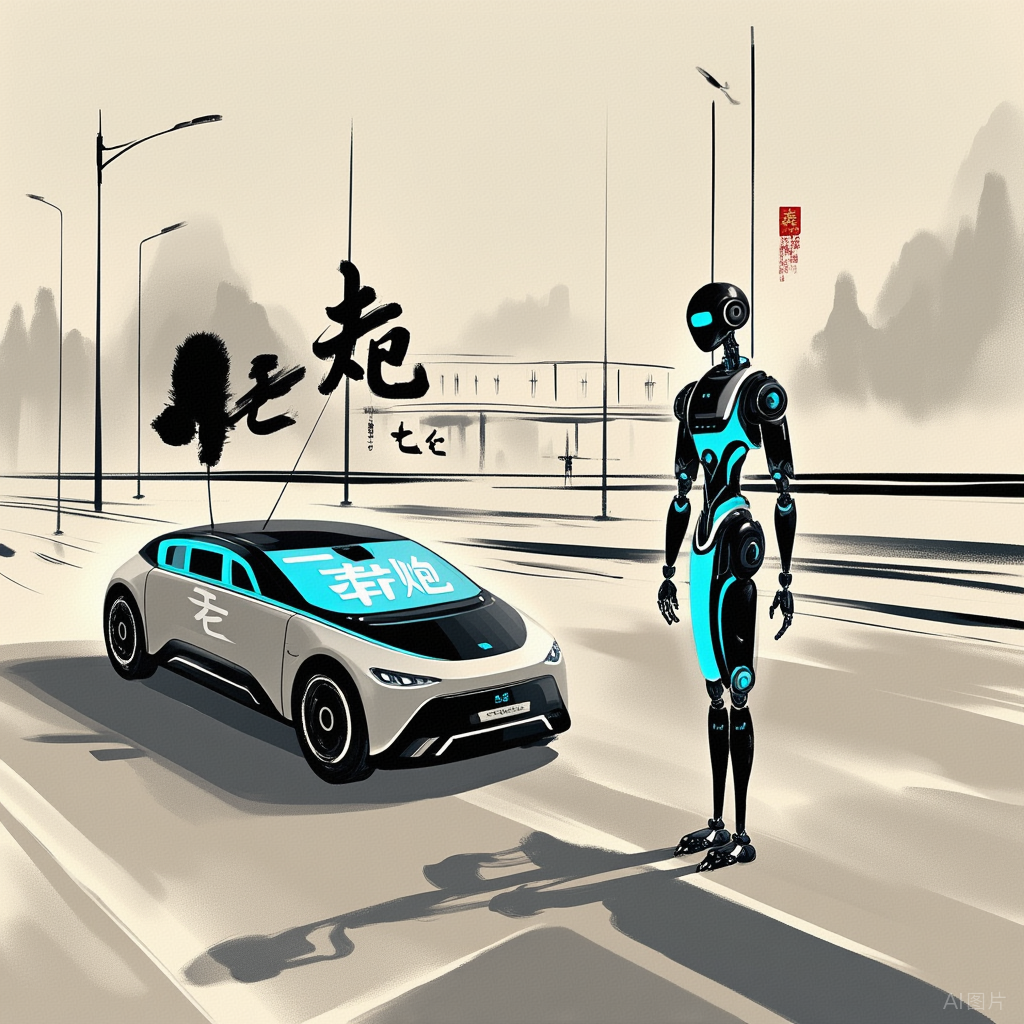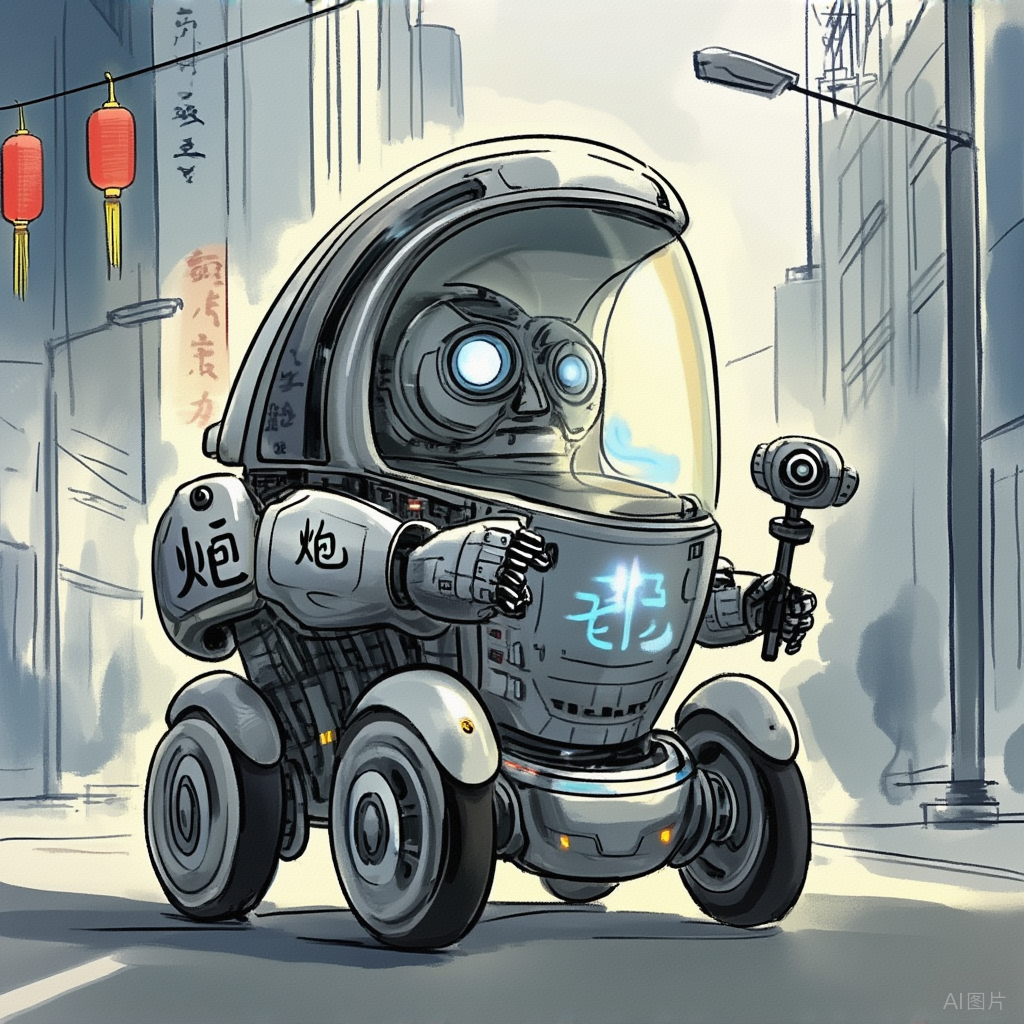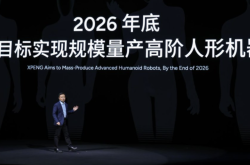"Veterans" of Autonomous Driving Transition to Humanoid Robots: Navigating Opportunities and Challenges
![]() 01/26 2025
01/26 2025
![]() 541
541
Introduction
Hey, family! One of the hottest trends in the tech world in 2025 has to be the development of humanoid robots!
Starting from the fourth quarter of last year, with the ever-deepening application of large models, the concept of embodied intelligence has gained significant momentum.
What's most striking is the mass exodus of "veterans" from the autonomous driving industry who have switched careers and jumped into this exciting race.
Today, WuRenCheLaiYe (Public Account: WuRenCheLaiYe) will delve into this fascinating shift.
(For reference, please click: "Musk: Autonomous Driving Will Be 100 Times Safer Than Human Driving by 2025, and Tesla Will Build Thousands of Humanoid Robots")

I. Autonomous Driving "Veterans" Embrace Career Shifts
Can you imagine? Leaders who were thriving in the autonomous driving sector have suddenly pivoted en masse to building humanoid robots.
Dr. Yu Yinan, a founding member of Horizon Robotics, a listed company specializing in intelligent driving chips, teamed up with Zhao Zhelun, former director of intelligent driving products at Li Auto, to establish Vitamotion, a startup pioneering embodied intelligence.
(For reference, please click: "Horizon Robotics "Veteran" Yu Yinan Leaves: Cross-Border Entrepreneurship from Autonomous Driving to Embodied Intelligence")
Li Zhenyu, senior vice president of Baidu Group, joined ItStone Robotics, another startup in the embodied intelligence sector.
Liu Fang, former technical head of Xiaomi's autonomous driving products, founded Amirobot.
This is merely the tip of the iceberg; there are many more examples!
As early as 2023, after leaving WeRide.ai, Zhang Li, the former COO, quickly joined Zhuji Power as co-founder and COO.
Gao Jiyang, who once held key technical positions at Waymo and Momenta, founded Xinghaitu and secured tens of millions of dollars in investment from top-tier venture capital firms.
Guo Yandong, who served as chief scientist at XPeng Motors and OPPO, founded Zhipingfang Technology Co., Ltd. The company's proprietary multimodal large model enables robots to achieve high-precision perception and natural interaction.
It's not just individual leaders making this transition; automobile manufacturers are also jumping into the embodied intelligence arena.
GAC Group unveiled its third-generation self-developed embodied intelligent humanoid robot GoMate, aiming for mass production of self-developed components in 2025 and small-scale production of complete machines in 2026.
Li Xiang, CEO of Li Auto, stated that the probability of building a humanoid robot is 100%.
XPeng Motors introduced its new generation of humanoid robot Iron Allen, which has already entered the production training phase.
Chery Automobile has collaborated with an AI company to develop humanoid robots, and SAIC Venture Capital has participated in the strategic financing of Zhiyuan Robotics. This lineup is truly impressive!
II. Technological Similarities, Diverse Challenges
Why are leaders in autonomous driving and automobile manufacturers so intrigued by humanoid robots?
Largely because of technological similarities.
Whether building cars or humanoids, the essence lies in perceiving and interacting with the environment, processing external information to guide machine movement.
As Andrej Karpathy, the former head of Tesla's autonomous driving department, noted, cars are also robots. The technology transfer from cars to humanoid robots involves minimal effort and readily available tools, essentially requiring a system reconfiguration.
However, in practical applications, there are notable differences between the two.
In terms of computational demands, autonomous driving is primarily used in high-speed scenarios and is closely tied to safety, necessitating high-performance computing chips for real-time calculations. For instance, L4 autonomous driving requires 1000 TOPS or even several thousand TOPS.

Currently, intelligent robots primarily operate in relatively low-speed environments, with comparatively lower computational requirements.
In terms of motion control, autonomous driving only handles 2D movement, whereas a humanoid robot's hand grasping alone requires imitating the movement of over 20 joints, placing higher demands on computation and control.
Moreover, the data encountered in autonomous driving is relatively "standardized," whereas robots operate in complex and variable scenarios, dealing with diverse and divergent data types, which necessitates stronger computational capabilities.
III. Commercialization Challenge: Cost Reduction
In the embodied intelligence race, commercialization poses a formidable challenge for all participants.
As Musk aptly put it, prototypes are easy, but mass production is difficult, or even impossible.
The reasons behind this extend beyond software algorithms and hardware sensors; they also encompass production and engineering capabilities. Put simply, it's essential to reduce product prices to make them affordable for users.
First, let's consider software algorithms. Embodied intelligence software is divided into the brain and cerebellum.
The brain handles perception and decision-making, primarily relying on machine vision, similar to autonomous driving. Many startups now leverage the multimodal large models of technology giants for empowerment, such as Figure AI, Ubtech Robotics, and UBTech. In this regard, everyone starts from a similar point.
However, regarding the cerebellum algorithm for motion control, each company pursues a different technical path.
The control algorithm for humanoid robots has evolved through multiple stages, with the current mainstream being the MPC + WBC solution. Nevertheless, the IL + RL route is considered the future mainstream but is currently in a technical bottleneck, making it challenging to break through in the short term. This explains why many companies have opted for wheeled bionic robots instead of bipedal humanoid robots.
In terms of hardware, the cost of computing chips accounts for approximately 7% - 10% of a humanoid robot's total cost. For a humanoid robot with an average price of 500,000 yuan, the chip cost does not exceed 10,000 yuan. In the future, as the cost of components like motors declines, the proportion of chip costs may increase.
In contrast, the "hands" for motion control are significantly more expensive. A humanoid robot's hands need to perform various high-precision actions with high degrees of freedom. For example, Tesla's Optimus humanoid robot features a dexterous hand with 22 degrees of freedom.
Moreover, tactile sensors are exorbitantly priced, even more so than hands without tactile sensors. The tactile sensors used in one hand can cost several thousand yuan. Large-scale applications may only become feasible when the cost of tactile sensors comprises about 10% of the hand's total cost.
Just as autonomous vehicles have gradually decreased in price from hundreds of thousands or even millions of yuan to around 200,000 yuan for Robotaxis and even below 100,000 yuan for unmanned delivery vehicles, the popularization of autonomous driving has accelerated.
For embodied intelligence startups, reducing the price of robots is crucial for future competition. Perhaps soon, many affordable and powerful humanoid robots will become commonplace, which sounds incredibly exciting!
In summary, WuRenCheLaiYe (Public Account: WuRenCheLaiYe) believes that with the deepening application of large models, the concept of embodied intelligence has suddenly gained widespread popularity. This has led to an ultra-interesting phenomenon where many leaders in the autonomous driving field are switching careers and joining this new frontier. Let's eagerly anticipate the rapid development of more autonomous driving and embodied intelligence enterprises! What do you think, dear readers?








